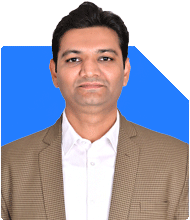Ramalingam Kalirajan |8442 Answers |Ask -Follow
Mutual Funds, Financial Planning Expert - Answered on Jul 11, 2024
He has an MBA in finance from the University of Madras and is a certified financial planner.
He is the director and chief financial planner at Holistic Investment, a Chennai-based firm that offers financial planning and wealth management advice.... more

I m 38 female. Earning 50k. Monthly expenses 25k including sip of 5k . Axis focused fund 3k, Nippon India value fund 2k. I expect to get 50k every month after retirement at the age of 58. My salary is not on time, not every month, in a year 6 months regular 6 months irregular with the gap of 4 months. How do I plan my finances
Current Financial Overview
You have a steady income of Rs 50,000 when paid, with monthly expenses of Rs 25,000. Your SIP investments are in place with Rs 5,000 allocated to Axis Focused Fund and Nippon India Value Fund. Your goal is to have Rs 50,000 monthly after retirement at age 58. Given the irregularity of your income, planning becomes even more crucial.
Understanding Mutual Funds
Mutual funds pool money from many investors to invest in a diversified portfolio of stocks, bonds, or other securities. They are managed by professionals and offer a range of benefits.
Categories of Mutual Funds:
Equity Funds: These invest in stocks. They offer higher returns but come with higher risks.
Debt Funds: These invest in fixed-income securities like bonds. They are safer but provide lower returns.
Hybrid Funds: These mix stocks and bonds, offering a balance of risk and return.
ELSS Funds: These are equity funds offering tax benefits under Section 80C of the Income Tax Act.
Advantages of Mutual Funds:
Diversification: Spreads risk by investing in various securities.
Professional Management: Expert fund managers handle investments.
Liquidity: Easy to buy and sell.
Tax Benefits: Certain funds offer tax deductions.
Risks of Mutual Funds:
Market Risk: Investment value can fluctuate with market conditions.
Interest Rate Risk: Affects debt funds when interest rates change.
Credit Risk: Risk of bond issuers defaulting.
Power of Compounding
Compounding is when your earnings generate more earnings. This process, over time, can significantly boost your wealth. By investing regularly, you can harness the power of compounding to meet your financial goals.
Regular Funds vs. Direct Funds
Disadvantages of Direct Funds:
Lack of Guidance: Missing out on professional advice from a Certified Financial Planner (CFP).
Time-Consuming: Requires constant monitoring.
Risk of Mistakes: Higher chance of poor investment decisions without expert guidance.
Benefits of Regular Funds:
Professional Advice: Access to expert financial planners.
Convenience: Less time and effort required from you.
Better Risk Management: Expert guidance helps in managing risks effectively.
Planning for Financial Goals
Monthly Budget and Expense Management:
You have monthly expenses of Rs 25,000, including Rs 5,000 in SIPs. It's essential to manage your budget carefully, especially during months when your income is irregular.
Emergency Fund: Build an emergency fund to cover at least six months of expenses. This ensures you have a financial cushion during the months when your salary is irregular.
Expense Tracking: Track your expenses diligently. Identify areas where you can cut costs and save more.
Investment Strategy:
Your current SIPs in Axis Focused Fund and Nippon India Value Fund are a good start. However, given your goal and irregular income, diversification is key.
Increase SIPs: Whenever your salary is regular, consider increasing your SIPs. Even small increments can have a significant impact over time.
Diversify Investments: Consider adding a mix of equity, debt, and hybrid funds to your portfolio. This helps balance risk and return.
Regular Review: Regularly review your portfolio with a CFP to ensure it aligns with your goals and market conditions.
Retirement Planning
Target Corpus:
You aim to get Rs 50,000 per month after retirement at age 58. This requires careful planning and disciplined investing.
Retirement Corpus Calculation: Work with a CFP to calculate the exact corpus needed to generate Rs 50,000 monthly. This will consider inflation and expected returns.
Systematic Withdrawal Plan (SWP): Post-retirement, you can set up an SWP from your mutual funds to get a regular income. This ensures a steady cash flow while keeping your investments growing.
Health Insurance:
Ensure you have adequate health insurance. Medical expenses can be a significant burden post-retirement, and having good health coverage can protect your savings.
Addressing Income Irregularity
Managing Irregular Income:
Since your income is irregular, financial discipline is crucial.
Save During Good Months: During months when you receive your salary, save a higher percentage to cover the months when your income is irregular.
Flexible Investments: Consider investing in liquid funds or short-term debt funds. These offer better returns than a savings account and can be easily liquidated when needed.
Budget Adjustments: Adjust your budget during lean months. Focus on essential expenses and cut back on non-essentials.
Side Income:
Consider exploring ways to generate a side income. This could be through freelancing, part-time work, or monetizing a hobby. A side income can help bridge the gap during months when your salary is delayed.
Avoiding Common Pitfalls
Real Estate:
Avoid investing in real estate for now. It’s illiquid and involves high transaction costs, which can strain your finances.
High-Risk Investments:
Avoid high-risk investments like direct stocks or volatile schemes. Stick to diversified mutual funds for steady growth.
Debt Management:
Ensure you have minimal debt. High-interest debts can erode your savings and impact your financial stability.
Final Insights
You've made commendable progress with your SIPs and managing expenses. Continue to focus on disciplined investing, diversify your portfolio, and consult with a CFP regularly. Your goal of achieving Rs 50,000 monthly post-retirement is achievable with careful planning and consistent efforts. Stay proactive and adapt your strategy as needed to navigate your income irregularities.
Best Regards,
K. Ramalingam, MBA, CFP,
Chief Financial Planner,
www.holisticinvestment.in
You may like to see similar questions and answers below
Ramalingam Kalirajan |8442 Answers |Ask -Follow
Mutual Funds, Financial Planning Expert - Answered on Apr 29, 2024
Ramalingam Kalirajan |8442 Answers |Ask -Follow
Mutual Funds, Financial Planning Expert - Answered on May 12, 2024
Ramalingam Kalirajan |8442 Answers |Ask -Follow
Mutual Funds, Financial Planning Expert - Answered on Jul 14, 2024
Ramalingam Kalirajan |8442 Answers |Ask -Follow
Mutual Funds, Financial Planning Expert - Answered on Aug 02, 2024
Dr Nagarajan J S K |401 Answers |Ask -Follow
NEET, Medical, Pharmacy Careers - Answered on May 15, 2025
Dr Nagarajan J S K |401 Answers |Ask -Follow
NEET, Medical, Pharmacy Careers - Answered on May 15, 2025
Dr Nagarajan J S K |401 Answers |Ask -Follow
NEET, Medical, Pharmacy Careers - Answered on May 15, 2025
Dr Nagarajan J S K |401 Answers |Ask -Follow
NEET, Medical, Pharmacy Careers - Answered on May 15, 2025
Dr Nagarajan J S K |401 Answers |Ask -Follow
NEET, Medical, Pharmacy Careers - Answered on May 15, 2025
Dr Nagarajan J S K |401 Answers |Ask -Follow
NEET, Medical, Pharmacy Careers - Answered on May 15, 2025
Vipul Bhavsar |83 Answers |Ask -Follow
Tax Expert - Answered on May 15, 2025
Vipul Bhavsar |83 Answers |Ask -Follow
Tax Expert - Answered on May 15, 2025
Vipul Bhavsar |83 Answers |Ask -Follow
Tax Expert - Answered on May 15, 2025
Vipul Bhavsar |83 Answers |Ask -Follow
Tax Expert - Answered on May 15, 2025











.jpg)











